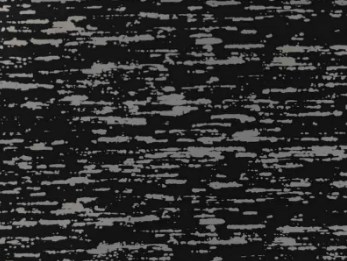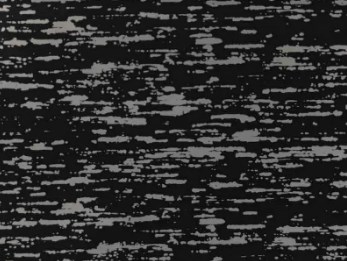Introduction
In recent years, the market for waterproof jackets has grown rapidly, driven by increasing outdoor activities, unpredictable weather patterns, and consumers’ demand for functional yet stylish clothing. At the heart of every high-performance jacket is the waterproof jacket fabric, which determines not only the jacket’s ability to repel water but also its breathability, durability, and overall comfort.
Waterproof jacket fabrics are no longer just about preventing rain from soaking through. Modern fabrics incorporate advanced technologies such as ePTFE membranes, PU coatings, and multi-layer laminates, offering a combination of water resistance, breathability, and long-lasting wear. The choice of fabric can significantly influence user experience, whether for daily commuting, hiking, mountaineering, or extreme-weather expeditions.
Classification and Characteristics of Waterproof Jacket Fabrics
Waterproof jacket fabrics can vary widely in construction, performance, and intended use. Understanding these differences is essential for selecting a jacket that meets specific weather conditions and activity levels. Broadly, these fabrics fall into three main categories: PU-coated fabrics, ePTFE membranes (like GORE-TEX), and multi-layer laminated fabrics.
-
PU-Coated Fabrics
Polyurethane (PU) coatings are among the most common waterproof treatments applied to jackets. They offer moderate water resistance, are cost-effective, and can be used in lightweight jackets suitable for city commuting or casual outdoor use. While PU-coated fabrics provide basic protection from rain, they typically offer average breathability, making them more suitable for short-duration wear in wet conditions rather than prolonged outdoor activities. -
ePTFE Membranes
Expanded polytetrafluoroethylene (ePTFE) membranes represent high-end waterproof fabrics. Known for their extreme water resistance and excellent breathability, these membranes are often used in premium outdoor gear designed for hiking, climbing, or extreme weather conditions. Jackets made with ePTFE membranes often feature seam-sealing and DWR (Durable Water Repellent) treatments to enhance performance in heavy rain. -
Multi-Layer Laminated Fabrics (2, 2.5, or 3-Layer)
Multi-layer fabrics combine different layers to achieve a balance between water resistance, breathability, and durability. Two-layer fabrics are generally lighter and more breathable but may be less durable. 2.5-layer fabrics add a thin protective inner layer for better water resistance while remaining lightweight, ideal for active outdoor use. Three-layer fabrics provide maximum durability and protection, making them suitable for harsh conditions or long-duration outdoor adventures.
Comparison of Waterproof Jacket Fabrics
| Fabric Type | Water Resistance | Breathability | Durability | Key Features |
|---|---|---|---|---|
| PU-Coated Fabric | Moderate | Average | High | Affordable, easy to manufacture, ideal for city use |
| ePTFE Membrane | Extremely High | High | High | Premium outdoor brands, excellent comfort and protection |
| 2.5-Layer Composite | High | High | Medium | Lightweight, breathable, designed for long activities |
| 3-Layer Composite | Extremely High | Medium-High | High | Highly durable, professional-grade outdoor gear |
Technology Trends in Waterproof Jacket Fabrics
The waterproof jacket fabric industry is constantly evolving, driven by consumer demand for higher performance, comfort, and sustainability. Recent technological trends reflect these priorities, focusing on eco-friendly treatments, lightweight designs, and enhanced durability for extreme conditions.
-
Eco-Friendly and PFAS-Free Treatments
Environmental concerns are reshaping how waterproof fabrics are manufactured. Traditional Durable Water Repellent (DWR) coatings often contain PFAS (per- and polyfluoroalkyl substances), which are persistent in the environment. Modern waterproof jacket fabrics increasingly use PFAS-free and eco-friendly water-repellent treatments, providing effective protection against rain while reducing environmental impact. These innovations appeal to environmentally conscious consumers and align with stricter global regulations. -
Lightweight and Highly Breathable Fabrics
Outdoor enthusiasts increasingly demand jackets that offer both protection and comfort. Lightweight fabrics with high breathability allow moisture from sweat to escape while keeping water out. Fabrics like 2.5-layer laminates or high-performance PU coatings provide this balance, making them ideal for hiking, running, and other aerobic outdoor activities. The emphasis is on achieving maximum mobility without compromising water resistance. -
Enhanced Durability for Extreme Weather
For mountaineers, skiers, and professionals working in harsh environments, durability is as important as waterproof performance. 3-layer laminated fabrics and ePTFE membranes are engineered to withstand heavy rain, wind, and abrasion. Seam-sealed construction further enhances protection, ensuring that water does not penetrate through stitching. Durability tests often measure fabric resistance to tearing, abrasion, and repeated exposure to moisture, reflecting the growing demand for reliable outdoor gear. -
Integration of Advanced Membranes and Coatings
Recent innovations include hybrid membranes that combine high water resistance, breathability, and flexibility. Some fabrics incorporate nano-coatings to repel water at the microscopic level while maintaining softness and lightweight characteristics. These advancements allow designers to produce jackets that are both functional and comfortable for everyday use and extreme outdoor adventures. -
Consumer-Oriented Innovations
Beyond technical performance, design and comfort features are increasingly integrated into fabric development. Jackets now incorporate stretch panels, ergonomic cuts, and moisture-wicking inner layers, all built upon high-performance waterproof fabrics. Keywords such as “lightweight breathable waterproof jacket fabric” and “durable waterproof jacket fabric for extreme weather” highlight consumer interest in multifunctional materials.
Application Scenarios of Waterproof Jacket Fabrics

Waterproof jacket fabrics are designed to serve different purposes depending on the environment and activity. Choosing the right fabric ensures comfort, protection, and durability. Below are common scenarios and fabric recommendations.
-
Everyday City Use
For daily commuting or casual wear, jackets need to provide moderate water resistance and comfort. PU-coated fabrics are ideal because they are lightweight, cost-effective, and suitable for short-duration exposure to rain. Breathability is less critical for urban use, making these jackets practical for day-to-day activities. -
Outdoor Activities: Hiking and Trekking
Outdoor enthusiasts require jackets that balance waterproofing and breathability. 2.5-layer laminated fabrics are perfect for these activities, offering high water resistance while allowing sweat to escape. Seam-sealed construction ensures that water does not seep through stitches, and lightweight materials improve mobility for long hikes. -
Extreme Weather and Professional Use
For mountaineering, skiing, or work in harsh climates, fabrics must provide maximum protection and durability. 3-layer laminated fabrics or ePTFE membranes excel in these scenarios, offering superior water resistance, high durability, and reasonable breathability. These jackets are designed to withstand heavy rain, wind, and abrasion while maintaining long-term performance. -
Leisure and Sports Activities
Sports like trail running or cycling demand jackets that are ultra-lightweight, breathable, and water-resistant. Lightweight breathable waterproof fabrics allow athletes to move freely while staying dry, making activities safer and more comfortable.
Recommended Waterproof Jacket Fabrics for Different Scenarios
| Scenario | Recommended Fabric | Water Resistance | Breathability | Key Features |
|---|---|---|---|---|
| City commuting | PU-coated Fabric | Moderate (suitable for light rain) | Average | Affordable, comfortable for daily wear |
| Hiking / Trekking | 2.5-layer Composite | High (resistant to moderate rain) | High | Lightweight, breathable, seam-sealed |
| Extreme Weather / Mountaineering | 3-layer Composite or ePTFE Membrane | Extremely High (resistant to heavy rain) | Medium-High | Durable, professional-grade protection |
| Leisure Sports / Cycling | Lightweight Breathable Waterproof Fabric | High | High | Flexible, comfortable for active movement |
Buying Guide for Waterproof Jacket Fabrics
Selecting the right waterproof jacket fabric requires understanding key performance indicators, user needs, and environmental conditions. A well-chosen fabric ensures comfort, protection, and long-lasting wear.
- Understand Water Resistance Levels
Water resistance is usually measured by how much water a fabric can withstand before leaking. Terms like moderate, high, and extremely high water resistance are often used to describe fabrics in a consumer-friendly way.
- Moderate water resistance is suitable for light rain or short showers.
- High water resistance is ideal for extended outdoor activities.
- Extremely high water resistance is recommended for extreme weather or professional outdoor use.
-
Check Breathability
Breathability determines how well moisture from sweat escapes the jacket. Fabrics with higher breathability are more comfortable during vigorous activities like hiking, cycling, or skiing. Terms such as high breathability or medium-high breathability indicate performance without overwhelming technical detail. -
Consider Durability
Durability is critical if the jacket will face rough conditions. Factors include resistance to tearing, abrasion, and repeated exposure to water. Multi-layer laminates and ePTFE membranes generally offer the highest durability. -
Look for Eco-Friendly Treatments
Environmental sustainability is increasingly important. Many brands now offer PFAS-free and eco-friendly water-repellent treatments, which provide effective protection while reducing environmental impact. This is a key consideration for environmentally conscious buyers. -
Understand Seam-Sealing and Coating Technology
Seam-sealed jackets prevent water from entering through stitched seams. Coatings such as DWR (Durable Water Repellent) enhance surface water resistance. For buyers, knowing whether a jacket has seam-sealed construction or a DWR finish helps gauge overall protection. -
Match Fabric to Activity and Climate
Use the table from the previous section to guide fabric selection: choose PU-coated fabrics for city use, 2.5-layer laminates for outdoor adventures, and 3-layer or ePTFE fabrics for extreme weather conditions. Always consider both activity intensity and expected weather conditions.
Future Development Trends and Innovations

The waterproof jacket fabric industry is entering a period of rapid innovation, driven by consumer expectations for higher performance, sustainability, and multifunctionality. Several trends are shaping the next generation of fabrics.
-
Sustainable and Eco-Friendly Materials
Environmental responsibility is a major driver of innovation. Brands are increasingly adopting PFAS-free, biodegradable, and recycled materials for waterproof jacket fabrics. Eco-friendly Durable Water Repellent (DWR) treatments are gaining traction, offering protection from rain without harming the environment. Consumers are more likely to choose products that combine high performance with sustainable practices. -
Lightweight and High-Performance Fabrics
The demand for lightweight, breathable, and flexible fabrics continues to grow, especially for outdoor sports and active lifestyles. Advances in 2.5-layer laminates and hybrid coatings allow jackets to maintain waterproofing while improving comfort and mobility. Designers are focusing on creating fabrics that are easy to pack, flexible, and suitable for a wide range of activities, from hiking to urban commuting. -
Smart and Multifunctional Fabrics
Future fabrics may incorporate smart textiles that respond to environmental conditions, regulate temperature, or repel water more effectively through adaptive coatings. Multifunctional jackets may integrate stretch panels, moisture-wicking layers, and thermal insulation within the waterproof fabric, enhancing performance without adding bulk. -
Durability and Extreme Weather Adaptation
As outdoor sports and extreme activities become more popular, there is an increased emphasis on durable, long-lasting fabrics capable of withstanding severe weather. Fabrics with enhanced abrasion resistance, reinforced seams, and high hydrostatic head ratings will continue to dominate high-performance segments. -
Consumer-Centric Innovations
Consumers increasingly value comfort, convenience, and aesthetics, alongside technical performance. Waterproof fabrics are being designed with ergonomic cuts, lightweight stretch, and stylish textures that appeal to both outdoor enthusiasts and urban users. Keywords like “lightweight breathable waterproof jacket fabric” and “durable waterproof jacket fabric for extreme weather” reflect growing interest in versatile and user-friendly products. -
Integration of Technology and Design
Brands are experimenting with nano-coatings, hybrid membranes, and layered constructions to maximize water resistance, breathability, and softness. The integration of advanced materials with smart design solutions ensures that future waterproof jackets meet both functional and aesthetic demands.
Conclusion
Waterproof jacket fabrics play a critical role in determining the performance, comfort, and durability of jackets across different activities and environments. From PU-coated fabrics suitable for city wear to 3-layer laminates and ePTFE membranes designed for extreme outdoor conditions, understanding fabric characteristics is essential for both consumers and industry professionals.
Modern fabrics are no longer just about keeping water out. Breathability, lightweight construction, durability, and eco-friendly treatments have become equally important, reflecting the evolving demands of consumers. Keywords such as Durable Water Repellent (DWR), PFAS-free treatments, and lightweight breathable waterproof fabrics highlight the industry’s focus on combining functionality with sustainability.
By considering factors such as water resistance, breathability, durability, and activity requirements, buyers can select jackets that offer the best performance for their specific needs. Tables comparing fabric types and application scenarios provide a clear guide for informed decision-making, whether for everyday commuting, outdoor sports, or extreme-weather expeditions.

 English
English 中文简体
中文简体





.png)


